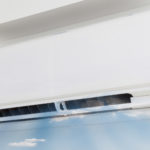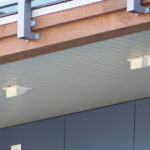 Many of your customers face constant pressure to reduce energy consumption. Businesses and facility managers must always improve margins and meet the requirements of certification programs such as LEED. One energy conservation strategy that has been gaining traction is load shedding.
Many of your customers face constant pressure to reduce energy consumption. Businesses and facility managers must always improve margins and meet the requirements of certification programs such as LEED. One energy conservation strategy that has been gaining traction is load shedding.
What is load shedding?
Load shedding shuts off power to one part of a system to reduce the load on the overall system. Typically, the power is cut or reduced on a rotational basis throughout the system. When HVAC is part of a load shedding plan, the system needs to continue to provide optimal ventilation and indoor air quality (IAQ).
Load shedding can be executed at the national or regional level. It can be a response to an immediate threat to the system, or it can be a planned strategy that can also be operated within a single building. Utilities sometimes ask large energy consumers to participate in a voluntary load shedding program. Building managers then must establish a system of power regulation that meets the utility’s requirements. Because HVAC can be responsible for up to 40% of a building’s energy use, it’s a key component of most building load shedding plans.
A well-designed HVAC system can execute load shedding with minimal impact on occupants. Reducing the power load in parts of the system will cause temperature changes, but the thermal mass of the building should limit the temperature change to one or two degrees.
HVAC load shedding challenges
A successful load shedding strategy saves a meaningful amount of energy while also maintaining acceptable IAQ and ambient temperature.
A residential building is often equipped with hysteresis controllers that turn off and on based on a specific temperature, known as the setpoint. Building managers can’t select individual units for participation, nor can they dictate each unit’s setpoint. And the common areas in a residential building do not consume enough power to be an effective load shedding option.
Commercial HVAC systems tend to be broken into larger units that can be individually controlled, but they often have intricate subsystems. Careful system design is required for a load shedding strategy to work.
Factors to consider:
• Baseline power load information must be gathered prior to building a load shedding strategy.
• System designers need to know the load decrease goal. A design based on a 30% load decrease has different requirements than one with a 50% target.
• The intervals for load measurement need to be less than an hour to ensure that a meaningful reduction is measured and sufficient air exchange is provided.
• Setpoints need to be carefully chosen. A minor change could result in unsafe levels of C02 in the air.
A load shedding alternative to HVAC
Lighting is another prime candidate for load shedding as it can use up to 30% of a building’s energy. Proponents of using lighting in a load shedding strategy claim that it can be reduced by as much as 30% without negatively impacting occupants.
Opponents of using lighting for load shedding claim that the flickering that occurs during changes in lighting make it impractical.
Lighting should be part of a load shedding strategy for buildings that require a lot of cooling. During the summer months, a reduction in lighting will also reduce the air conditioning load because the lights create less heat.
Load shedding and building automation
Load shedding may become more common and more sophisticated as building automation systems (BAS) are developed to meet the demand. Currently, a load shedding request is sent to the facility manager via phone or email. The facility manager then makes the necessary adjustment to their system.
In an automated system, the utility would send a signal or code directly to the BAS, which would make the adjustments.
Load shedding is another way that smart building technology will improve energy efficiency. As long as IAQ is not compromised this can only be a good thing.



